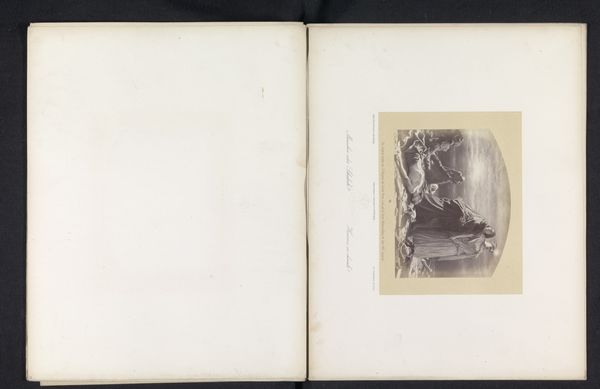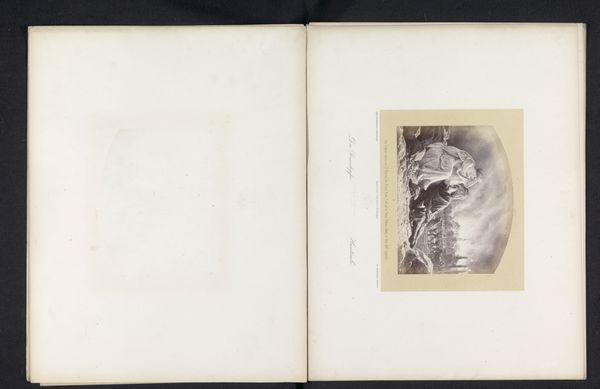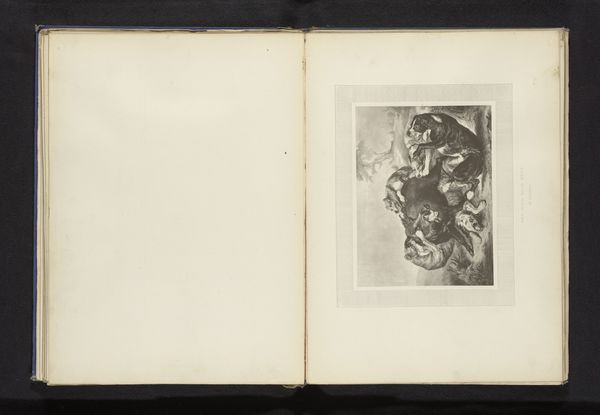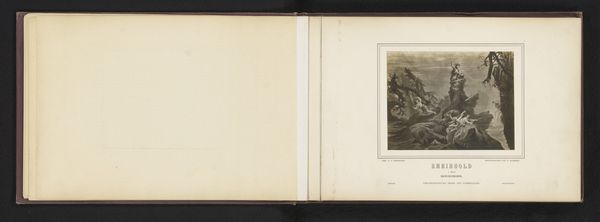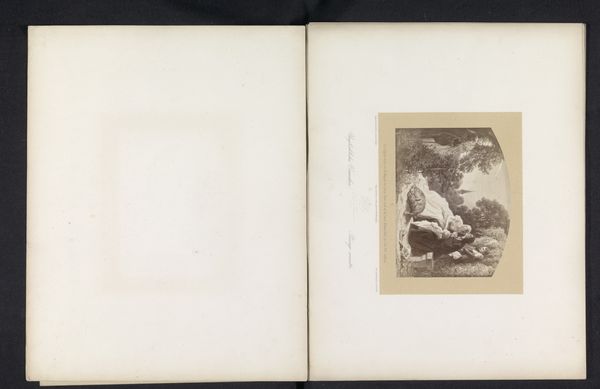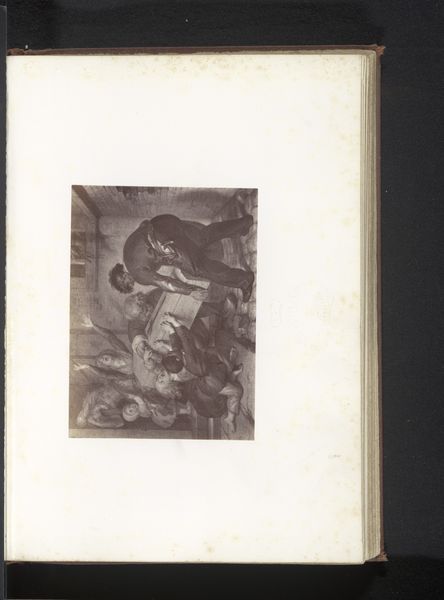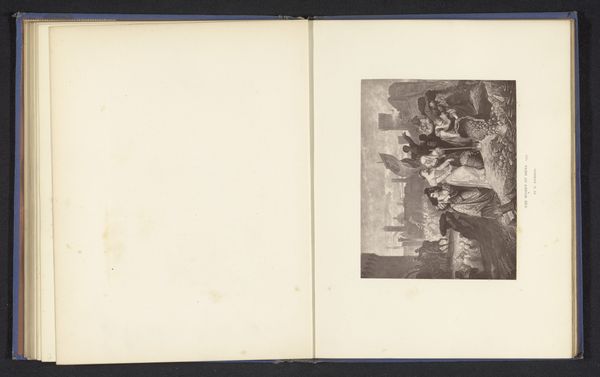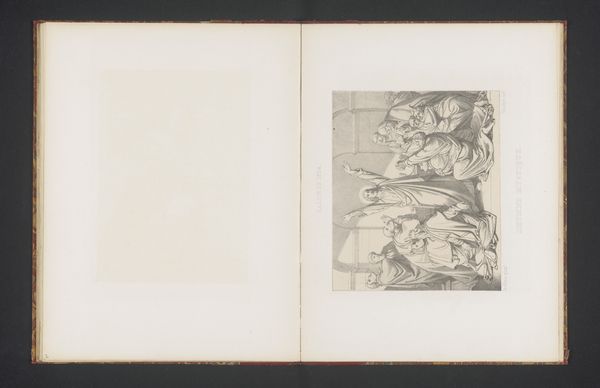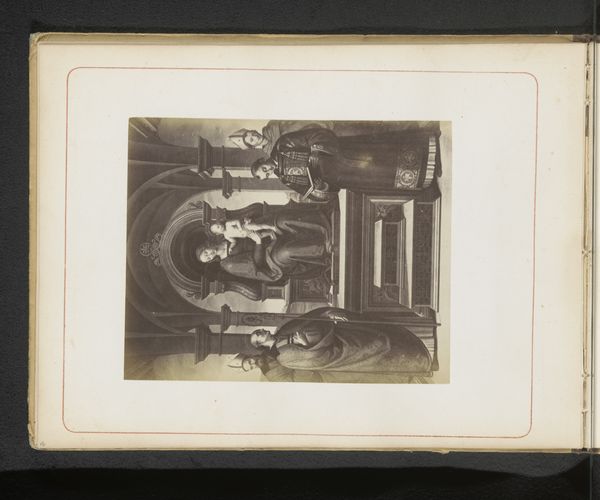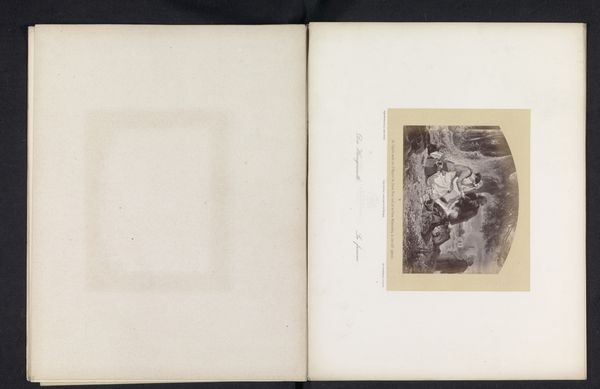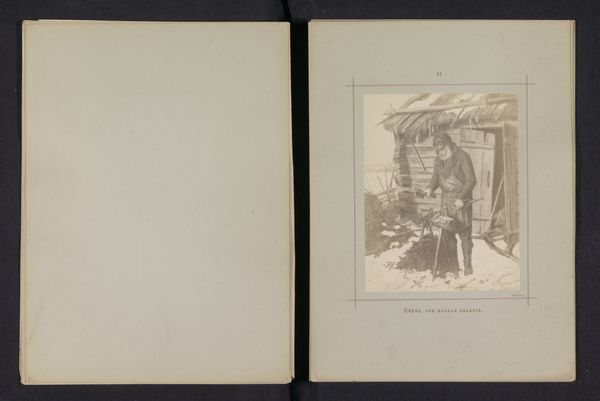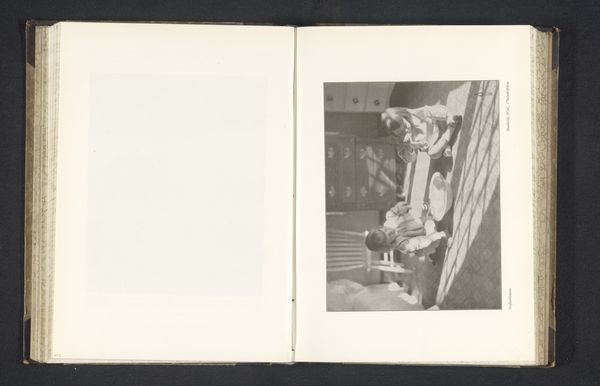
Fotoreproductie van een prent naar een karton voor een tapijt door Rafaël, voorstellend Elymas die met blindheid is geslagen before 1861
0:00
0:00
print, etching, engraving
# print
#
etching
#
history-painting
#
academic-art
#
italian-renaissance
#
engraving
Dimensions: height 138 mm, width 176 mm
Copyright: Rijks Museum: Open Domain
Editor: So, this is "Fotoreproductie van een prent naar een karton voor een tapijt door Rafaël, voorstellend Elymas die met blindheid is geslagen," a print, specifically an etching or engraving, created before 1861 after Raphael's design. There's a real drama to it; lots of figures reacting to something unseen. How do you interpret this scene? Curator: The dramatic grouping definitely grabs your attention. As a historian, I'm particularly interested in its public role. This isn't just a depiction of a biblical scene, but a statement about power, belief, and visibility within its own time. Consider the tapestry cartoon tradition – large-scale, meant to be seen, didactic, often commissioned by institutions. Editor: Didactic? Curator: Absolutely. The story of Elymas being struck blind is about the triumph of Christian faith over pagan magic. Now, think about where tapestries like this might have been displayed. Editor: Churches? Palaces? Curator: Exactly. Spaces where power was performed. This image reinforces certain power structures, but then, so does its display in, say, a museum now. What choices led us to show this work? How does that reflect our values, our view of history? Is it for art historical study, a testament to Renaissance skill, or something else? Editor: That makes me think about accessibility too, how prints like this made art and ideas more widely available. It's not the original tapestry, but it spreads the message, right? Curator: Precisely. The medium is part of the message. And think about who owned prints, who had access. So this reproduction becomes a tool, a tool to further amplify those themes of power and conversion throughout history. Editor: I never thought about a print having that much impact. It’s more than just a copy. Curator: Exactly, its circulation reshapes history itself. This really changes the way I see this image, considering it's place within both religious history and the history of reproduction and dissemination.
Comments
No comments
Be the first to comment and join the conversation on the ultimate creative platform.
